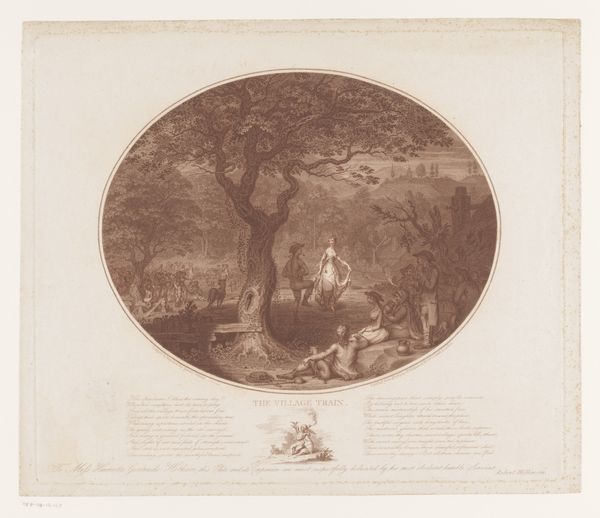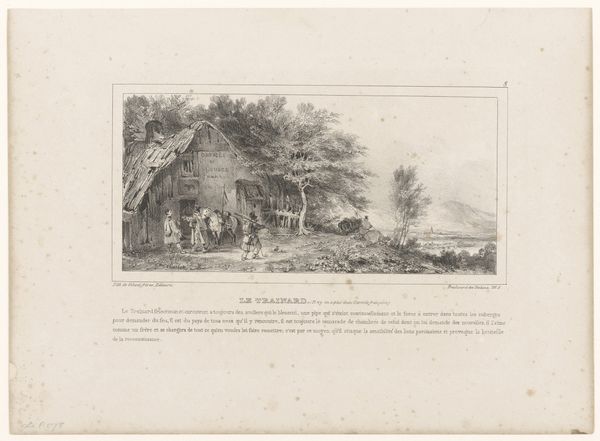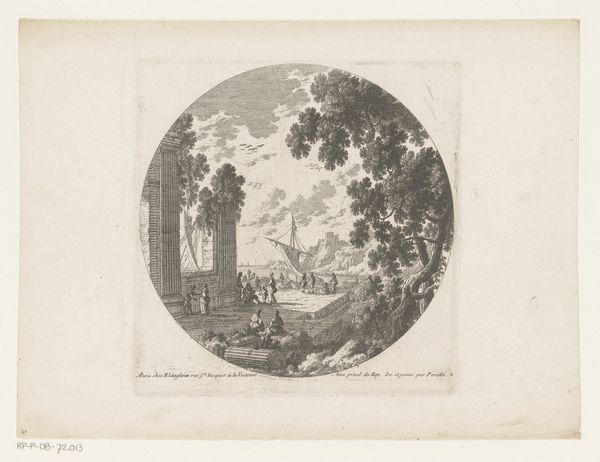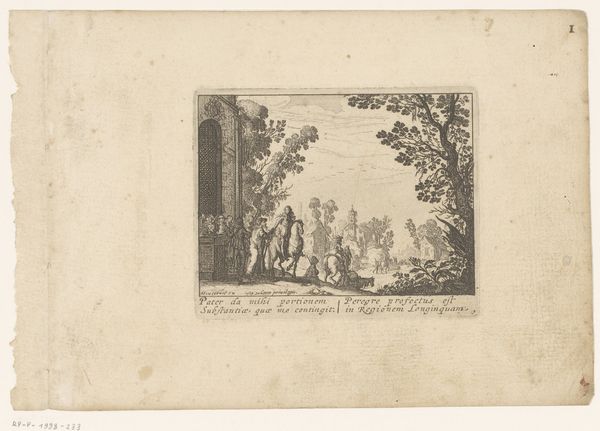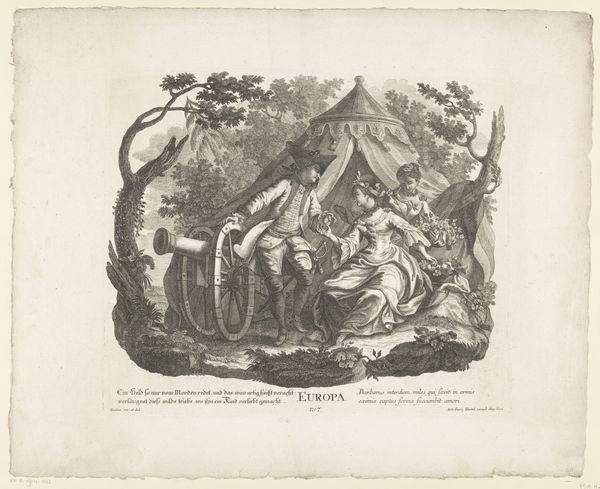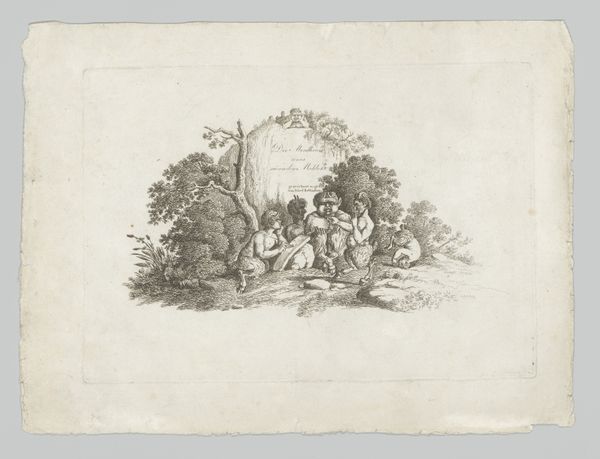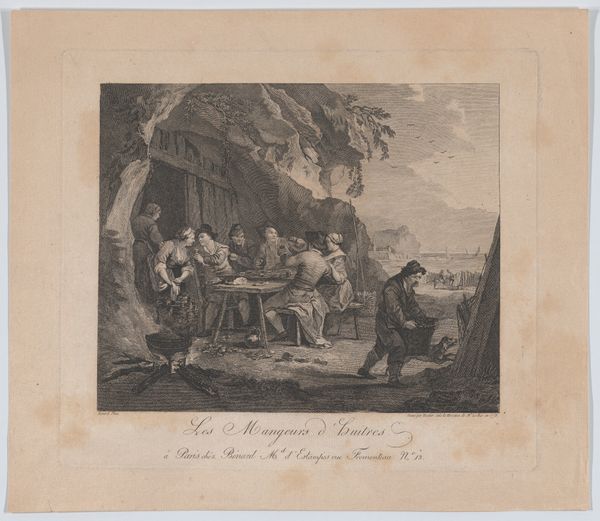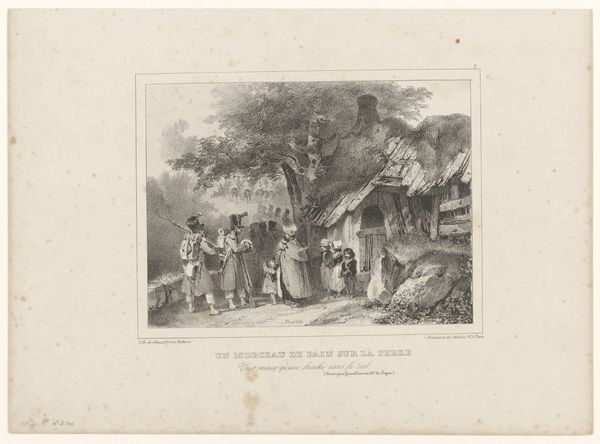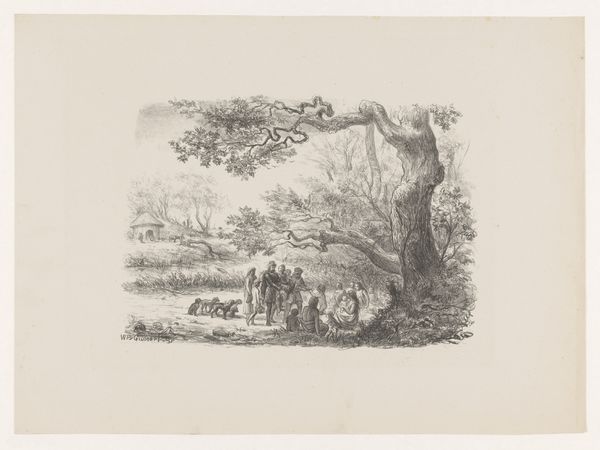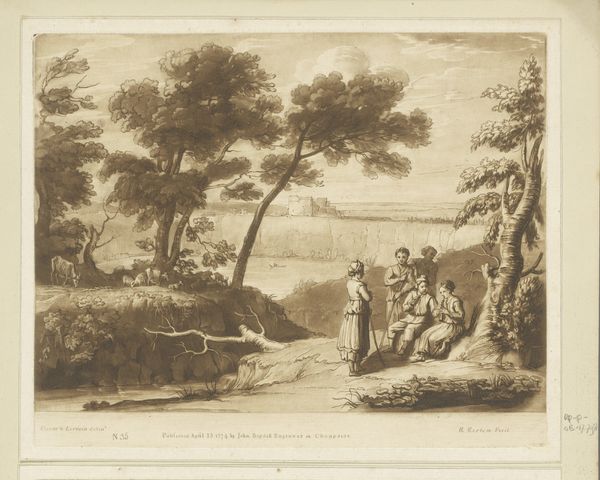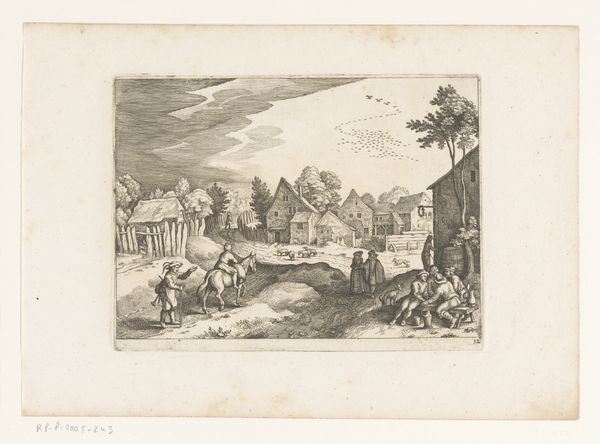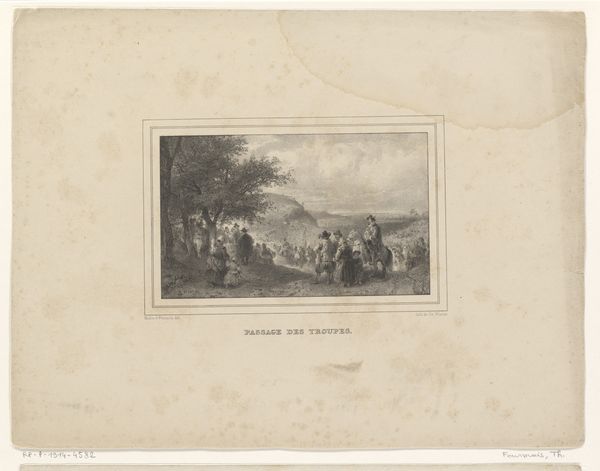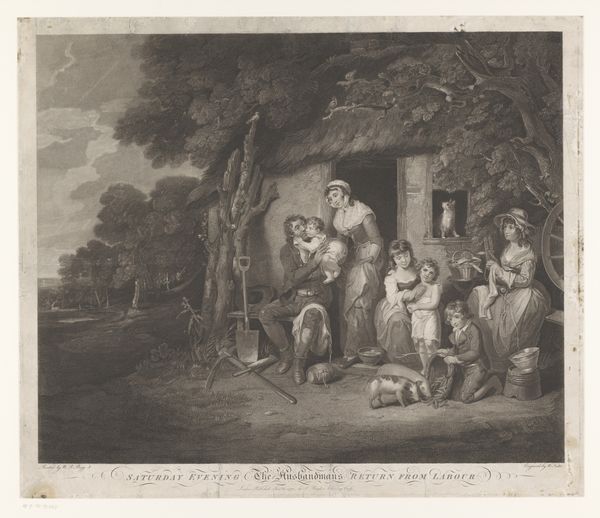
Dimensions: height 427 mm, width 506 mm
Copyright: Rijks Museum: Open Domain
Curator: Here we have "Man en vrouw vertrekken uit een dorp," or "Man and Woman Leaving a Village," an engraving made in 1784. What does this scene evoke in you? Editor: An immediate feeling of melancholy. There’s a quietness about it, despite the presence of figures. It’s not overtly dramatic, more of a gentle fading. Curator: It's by James Gillray, a British caricaturist and printmaker. While this piece deviates from his usual satirical fare, it still communicates social realities through visual cues. The very act of leaving the village speaks volumes. I think the oval composition isolates it from our world, focusing on themes of societal change, which I'll add were often politically charged during the period of aristocratic decadence that preceded the French Revolution. Editor: Absolutely. Consider the couple at the heart of the print. There's a resignation in their posture, a stillness in their faces, or lack of, really, which makes it resonate as an archetype for displacement and societal upheaval that carries across epochs. The figures represent those affected, displaced, forced out to seek better prospects as social transformations unfold in the broader context, an archetype perhaps familiar since Cain and Able? Curator: That feels like a useful connection; Gillray here employs a distinctly historical medium – engraving – to convey a very immediate and present human experience. Editor: And the dog adds a nice little dose of narrative pathos to it. But it's also really beautiful technique and texture, a very high skill level in rendering figures with those really sharp lines in such delicate fashion. The print’s execution lends dignity to the everyday plight. Curator: Gillray's use of engraving truly elevates what could have been a mere depiction of rural life. Editor: In fact, it’s interesting that such intimate rendering is also so strongly political, linking private emotional worlds to macro societal movements, almost creating a record of history in feeling. A really insightful choice. Curator: Absolutely, which provides, still today, an interesting contrast, when viewed as a socio-political document viewed at The Rijksmuseum in the modern era. A document indeed. Editor: A lasting one at that.
Comments
No comments
Be the first to comment and join the conversation on the ultimate creative platform.
